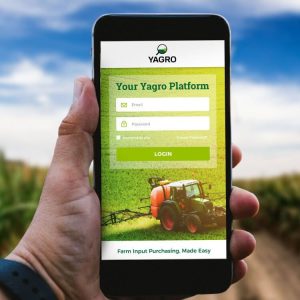[ad_1]
“Sometimes the farmer has a gut feeling about something but being able to analyse the data can support or disprove that gut feeling,” explains Emma Kelcher, Senior Customer Success Manager at data analytics company YAGRO. “For one of our customers, just having the financials in front of him made it much easier to justify investment in a second seed drill.” This is just one of the practical examples that Emma will be discussing at the Agri-TechE data event ‘Planning a resilient on-farm data strategy’ on Wednesday 15th March 2023.

“I have had over 11 years’ experience collecting on-farm data and just one example that was always an obstacle to our work was the inconsistency in field names and cropping types. For example: I might call Winter Wheat ‘WW’ in my farm management software, I might also refer to my varieties as Extase and not KWS Extase, but other users might use different terms for the same thing.
“When you are using several software systems the problem gets more challenging. Yield data was recorded in Weighbridge and Excel files, and with many users there would be errors in field name spelling.”
Improving data collation and consistency
“What YAGRO does is collate, verify, and structure data into a common infrastructure. It recognises that each farm records its data in a way that is unique to them but standardises everything, so that for example field names are consistent year on year, multiply that up to every variable and you get the idea of how much data we process, clean, validate and structure. This makes life easier and enables you to make comparisons.
“I have always had a passion for data and ensuring farmers do the best they can, and the key to YAGRO is unlocking the true value of data to the customers in an efficient and user-friendly way.”
The focus of Emma’s team is ensuring that users are getting the most out of the platform and tools, including training users and extending the scope of the ‘tool kit’.
“My favourite part of the job is when a farmer asks for something our systems doesn’t yet do and either figuring out how it can be done with our tools or working closely with our software engineers to develop new features and elements. It’s really rewarding to see ideas implemented and used by farms.”
Analysing yield data and profit margins

“We have farms who are sending in over six plus years’ worth of field and harvest data which we can then use to highlight trends, like individual field performances – which are improving, which are declining in output – then being able to explore what is driving that change.
“Farms don’t need to organise their data themselves. We do the hard work for them. We structure that into a standardised format to allow it to be anonymised and comparable with others.
“Once the data is cleaned, collated, and validated we present back to the farm that information in a very visual format showing their performance by any metric, with a focus on measuring by cost per tonne produced. We are also able to show them their performance against an anonymised data set, for example where they sit on verified market range on the cost of production for winter wheat.”
Justifying investments
Emma explains that the analysis provides actionable insights: “The other day we had a group of six farms sitting around a table discussing optimal drilling rates. We were exploring their optimum drilling rate and date for each farm. They all had data in our system and had given mutual permission to share their performance at a ‘nitty-gritty’ level – something we call a virtual group.
“One farm had a far longer drilling window than the rest and the resulting gross margin and yield was more volatile. Seeing the financial impact and risk that this was having over a few years made investing in a second drill a no-brainer for them. The farm rented – then bought – a second-hand Varderstad, which cut the drilling window in half. He had suspected that this might have been the case, but by having the financials in front of him and reviewing the wider group performance he was able to make a more informed decision.
Comparing agronomy strategies
“For another farmer we compared the difference in the cost of agronomic advice – where one was based on a walk rate and the other bundled into the input costs. There was a difference on the chemical cost which was as suspected, but the comparison showed a rate difference of 16% between the two blocks, which highlighted what that farm was paying to have a low-risk approach to their disease and weed control. Having the financial analysis allows you to make a more informed decision and actually put a value on their attitude to risk.
Improving data input
“The important part is collecting quality data in the first place. The more data that is collected, the more insight can be gained. Once farms have joined the YAGRO platform you do tend to see the following year the improvements they have made to their data collection on-farm, in some cases even unlocking some technologies such as telematics on their combines being used more, allowing technology to do the hard work for them.
“When I joined YAGRO it was just a small team and since then I have seen it triple in size and the customer base grow which is exciting – it shows the value data has on farm.”
Emma Kelcher of YAGRO and Alastair Grizzell, Head of Sales at Map of Ag, will be among the speakers at the Agri-TechE event: ‘Planning a resilient on-farm data strategy’ on 15th March 2023 at Rothamsted Research from 12.30 – 17.00.
[ad_2]
Source link


